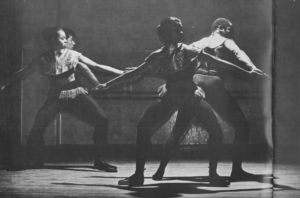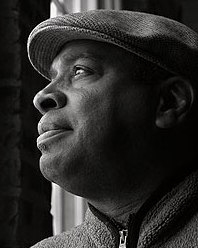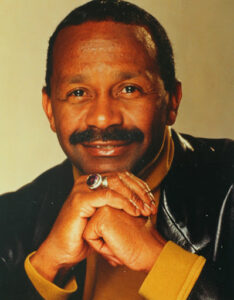The Capitol Ballet: 1988 Restoration

The Capitol Ballet Company, a multiracial performing company, was founded in 1961 by Doris Jones and Claire Haywood as an extension of their Jones-Haywood School. Jones served as the company’s artistic director until 1982. Today, the Capitol Ballet Company holds the distinction of being the oldest predominately African American ballet company in the United States. In 1980, Jones also formed the Jones-Haywood Youth Dancers in order to provide more opportunities for younger dancers. As Miss Haywood described it, “the company is an in-between training ground for becoming professionals.” The company’s primary goals are enlarging the group, getting more scholarship money for children who can’t afford lessons, and providing more consistent training and development for young people. Their ultimate aim is to contribute greatly to the Arts in the Washington Metropolitan Area by aiding the intellectual and aesthetic growth of young people in the community.
With grants from organizations like the D.C. Commission on the Arts, the Ford Foundation (the School of American Ballet), and the National Endowment for the Arts, the two dance instructors were able to take their students to study in New York with George Balanchine at the School of American Ballet and to perform nationally and internationally.
The company performed classic works like Swan Lake as well as original pieces by Jones, including Ebony Concerto and the Rachmaninoff Concerto. The company has appeared in concerts before the Cultural Arts Club of Cleveland, at John Hancock Hall in Boston, and at Cramton Auditorium in Washington, D.C. It has also performed with the Drama and Music Departments of Howard University in productions of Medea, Finian’s Rainbow, On The Town, and Fly Blackbirds. In 1983, the company closed due to economic pressure and a lack of funds. In an effort to reopen, a fundraising campaign beginning in 1987 resulted in the company reopening with 12 dancers in 1988 under the brief directorship of Keith Lee.
While the company closed again due to a lack of funds, it left a lasting impact by providing the opportunity for artistic expression that was denied to them in a segregated American society. The legacy of the company and its founders lives on through the Jones-Haywood School of Dance, which is still flourishing today.

Sources:
Capitol Ballet Guild, Incorporated, Gerald R. Ford Presidential Library
Highlights from America’s Black Broadway, Gale Academic One File
1980
March
- Continued funding issues caused the company to close for several months.
October
- The company is reduced to 8 dancers.
November
- Assistant Director Keith Lee resigned, although some sources said he was let go.
1981
- William Scott accepts a six week contract as Capitol Ballet’s assistant director. Scott was due to return in 1982 on a 40-week contract to “build and secure a progressive future from the company.”
1983
- The Capitol Ballet closed.
1988
- The company reopened in 1988 after a fundraising campaign beginning in 1987.
Keith Lee
 With the death of Claire Haywood in 1980, Doris Jones contacted Keith Lee (who was performing at the Kennedy Center of Performing Arts in D.C.) to be a guest teacher at the school. Eventually, Jones asked Lee to revive the company as deputy artistic director. He accepted and gathered 15 dancers in two months. Some of these dancers included Hinton Battle, Charles Adams, and Sandra Fortune Green (who was found by Bernice Hammond and brought to Doris Jones and Claire Haywood). In November of that year, Lee resigned, although some sources said he was let go.
With the death of Claire Haywood in 1980, Doris Jones contacted Keith Lee (who was performing at the Kennedy Center of Performing Arts in D.C.) to be a guest teacher at the school. Eventually, Jones asked Lee to revive the company as deputy artistic director. He accepted and gathered 15 dancers in two months. Some of these dancers included Hinton Battle, Charles Adams, and Sandra Fortune Green (who was found by Bernice Hammond and brought to Doris Jones and Claire Haywood). In November of that year, Lee resigned, although some sources said he was let go.
Keith Lee, a Brooklyn native, began dancing at three years old and, as a teen, attended the High School for the Performing Arts in New York.
Sources:
Capitol Ballet, Ngoma Center for Dance
The Last Dance of Keith Lee, The News & Advance
Keith Lee, MoBBallet
William Scott
 In 1981, Doris Jones asked William Scott, a young veteran of the Dance Theatre of Harlem, to take up where Keith Lee left off and mount a public performance. Scott accepted a six-week contract as Capitol Ballet’s assistant director. He curated a program for the Montgomery Blair High School in Silver Springs and had six weeks to gather and rehearse 10 dancers, many of them new, patching together a repertory. The program included Joyce Trisler’s Dance for Six, a ballet duet by Eugene Collins; a modest jazz-gospel number by Scott to music by Aretha Franklin; the Le Corsaire pas de deux danced by guest artists Sandra Fortune and Sylvester Campbell; and excerpts from Raymonda.
In 1981, Doris Jones asked William Scott, a young veteran of the Dance Theatre of Harlem, to take up where Keith Lee left off and mount a public performance. Scott accepted a six-week contract as Capitol Ballet’s assistant director. He curated a program for the Montgomery Blair High School in Silver Springs and had six weeks to gather and rehearse 10 dancers, many of them new, patching together a repertory. The program included Joyce Trisler’s Dance for Six, a ballet duet by Eugene Collins; a modest jazz-gospel number by Scott to music by Aretha Franklin; the Le Corsaire pas de deux danced by guest artists Sandra Fortune and Sylvester Campbell; and excerpts from Raymonda.
Source:
Capitol Ballet, Washington Post
Billy Wilson
 Billy Wilson, director, choreographer, and native of Philadelphia, received his early dance training at the Sydney King School. At 15, he received a scholarship to study classical ballet with Antony Tudor, artistic director of The Philadelphia Guild Ballet School and company. At 19, he made his New York debut in the City Center production of Carmen Jones, followed by appearances in the Broadway production Bells Are Ringing, starring Judy Holiday, and Jamaica, starring Lena Horne. At the restoration of the Capitol Ballet Company at the University of the District of Columbia in 1988, to assist her with the restoration, Doris Jones enlisted the help of Wilson as the company’s guest artistic director. He not only contributed three of the debut program’s five works but also helped recruit and rehearse the dancers and stage the performance.
Billy Wilson, director, choreographer, and native of Philadelphia, received his early dance training at the Sydney King School. At 15, he received a scholarship to study classical ballet with Antony Tudor, artistic director of The Philadelphia Guild Ballet School and company. At 19, he made his New York debut in the City Center production of Carmen Jones, followed by appearances in the Broadway production Bells Are Ringing, starring Judy Holiday, and Jamaica, starring Lena Horne. At the restoration of the Capitol Ballet Company at the University of the District of Columbia in 1988, to assist her with the restoration, Doris Jones enlisted the help of Wilson as the company’s guest artistic director. He not only contributed three of the debut program’s five works but also helped recruit and rehearse the dancers and stage the performance.
Sources:
Capitol Ballet Capital Night, The Washington Post
Billy Wilson, MoBBallet

Alisha Naidu
Iulia Stanciu

